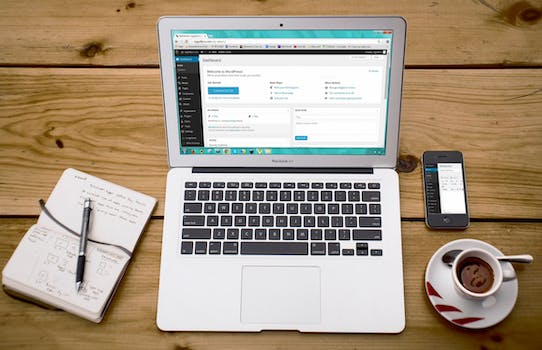

-
Table of Contents
"Unlock the Power of Email Marketing: 9 Strategies to Elevate Your eCommerce Brand"
Introduction
Introduction:
In today's competitive eCommerce landscape, building an exceptional brand requires effective email marketing strategies. Email marketing remains a powerful tool for engaging customers, driving sales, and fostering brand loyalty. To help you succeed in this endeavor, we have compiled a list of nine effective eCommerce email marketing strategies. By implementing these strategies, you can enhance your brand's visibility, connect with your audience, and ultimately drive revenue growth.
Personalization: How to Tailor Your eCommerce Email Marketing Campaigns for Maximum Impact
Email marketing is a powerful tool for eCommerce businesses to build and strengthen their brand. One of the key strategies to make your email marketing campaigns effective is personalization. By tailoring your emails to individual customers, you can create a more impactful and engaging experience that drives conversions and builds brand loyalty.
The first step in personalizing your eCommerce email marketing campaigns is to segment your audience. By dividing your subscribers into different groups based on their demographics, purchase history, or behavior, you can send targeted emails that are more relevant to their interests and needs. For example, you can create segments for new customers, loyal customers, or customers who have abandoned their shopping carts.
Once you have segmented your audience, you can start personalizing the content of your emails. Addressing your subscribers by their names is a simple yet effective way to make your emails feel more personal. It shows that you value them as individuals and not just as another email address in your database. Additionally, you can use dynamic content to tailor the email content based on the recipient's preferences or past interactions with your brand.
Another effective personalization strategy is to send triggered emails. These are automated emails that are triggered by specific actions or events, such as a customer making a purchase or abandoning their cart. By sending timely and relevant emails based on these triggers, you can increase engagement and drive conversions. For example, you can send a follow-up email to a customer who has abandoned their cart, offering a discount or reminding them of the items they left behind.
Personalization goes beyond just the content of your emails. You can also personalize the timing and frequency of your emails. By analyzing your subscribers' behavior and preferences, you can determine the best time to send emails to maximize open rates and click-through rates. Additionally, you can allow subscribers to choose the frequency of emails they receive, giving them more control over their inbox and ensuring that they only receive emails that are relevant to them.
In addition to personalizing the content and timing of your emails, you can also personalize the design and layout. Use your brand's colors, fonts, and imagery to create a consistent and recognizable email template. This helps to reinforce your brand identity and makes your emails stand out in the crowded inbox. Additionally, you can use dynamic product recommendations based on the recipient's browsing or purchase history to showcase products that are most likely to interest them.
Personalization is not just about tailoring your emails to individual customers. It's also about building a relationship with your subscribers. Use your emails to engage with your audience, ask for feedback, and provide valuable content that goes beyond just promoting your products. By showing that you care about your customers' needs and interests, you can build trust and loyalty, which in turn strengthens your brand.
In conclusion, personalization is a crucial strategy for eCommerce businesses to build an exceptional brand through email marketing. By segmenting your audience, personalizing the content, timing, and design of your emails, and building relationships with your subscribers, you can create a more impactful and engaging email marketing campaign that drives conversions and builds brand loyalty. So, start personalizing your eCommerce email marketing campaigns today and see the difference it can make for your brand.
Automation: Streamlining Your eCommerce Email Marketing with Automated Workflows

Automation: Streamlining Your eCommerce Email Marketing with Automated Workflows
In the fast-paced world of eCommerce, email marketing has become an essential tool for building and maintaining a successful brand. With the ability to reach a wide audience and deliver personalized messages, email marketing can help businesses connect with their customers on a deeper level. However, managing email campaigns can be time-consuming and overwhelming, especially as your customer base grows. That's where automation comes in.
Automated workflows are a game-changer when it comes to streamlining your eCommerce email marketing efforts. By setting up a series of automated emails triggered by specific actions or events, you can save time, increase efficiency, and deliver targeted messages to your customers at the right time. Here are nine effective strategies to help you build an exceptional brand through automated workflows.
1. Welcome Series: Start off on the right foot by sending a series of welcome emails to new subscribers. Introduce your brand, highlight your products or services, and offer a special discount or incentive to encourage their first purchase. This series of emails will help you make a great first impression and build a strong foundation for a long-term relationship with your customers.
2. Abandoned Cart Recovery: One of the biggest challenges in eCommerce is cart abandonment. With automated workflows, you can send a series of reminder emails to customers who have left items in their carts without completing the purchase. Offer incentives, such as free shipping or a limited-time discount, to entice them to come back and complete their purchase.
3. Post-Purchase Follow-up: After a customer makes a purchase, it's important to follow up and show your appreciation. Send a series of post-purchase emails to thank them for their purchase, provide order updates, and offer related products or services that they might be interested in. This not only strengthens the customer relationship but also encourages repeat purchases.
4. Product Recommendations: Use automated workflows to send personalized product recommendations based on each customer's browsing and purchase history. By analyzing their behavior, you can deliver targeted emails that showcase products they are likely to be interested in. This not only increases the chances of a purchase but also enhances the customer experience.
5. Birthday and Anniversary Emails: Show your customers that you care by sending personalized birthday and anniversary emails. Offer exclusive discounts or special gifts to celebrate these milestones. This not only makes your customers feel valued but also encourages them to make a purchase during these special occasions.
6. Re-Engagement Campaigns: Over time, some customers may become inactive or disengaged. Use automated workflows to send re-engagement emails to win them back. Offer incentives, such as a special discount or a free gift, to encourage them to return to your website and make a purchase. This strategy can help you revive dormant relationships and increase customer retention.
7. Upselling and Cross-selling: Automated workflows can also be used to upsell and cross-sell products or services to existing customers. Send targeted emails that showcase complementary products or upgrades to their previous purchases. This not only increases the average order value but also exposes customers to a wider range of your offerings.
8. Customer Feedback and Reviews: Use automated workflows to collect customer feedback and reviews. Send follow-up emails after a purchase, asking customers to rate their experience and leave a review. This not only helps you gather valuable insights but also encourages social proof, which can boost your brand's credibility and attract new customers.
9. Loyalty Programs: Reward your loyal customers with exclusive offers and discounts through automated workflows. Send personalized emails that highlight their loyalty status, offer special perks, and encourage them to refer friends or make additional purchases. This not only strengthens customer loyalty but also helps you expand your customer base through word-of-mouth marketing.
In conclusion, automation is a powerful tool for streamlining your eCommerce email marketing efforts. By implementing these nine effective strategies, you can build an exceptional brand, increase customer engagement, and drive sales. Remember to analyze your data, test different approaches, and continuously optimize your automated workflows to ensure maximum effectiveness. With the right automation tools and strategies in place, you can take your eCommerce email marketing to the next level and achieve remarkable results.
Segmentation: The Power of Targeted Email Lists in eCommerce Marketing Success
Email marketing is a powerful tool for eCommerce businesses looking to build an exceptional brand. One of the key strategies for success in this area is segmentation. By dividing your email list into smaller, more targeted groups, you can deliver personalized and relevant content to your subscribers. This not only increases the chances of engagement but also helps to build a stronger relationship with your customers.
Segmentation allows you to tailor your email campaigns to specific groups of people based on their interests, preferences, and behaviors. By understanding your audience and their needs, you can create more targeted and effective email marketing campaigns. For example, if you have an online clothing store, you can segment your email list based on gender, age, or even style preferences. This way, you can send tailored emails showcasing the latest trends for each group, increasing the likelihood of conversion.
Segmentation also helps to improve the overall deliverability and open rates of your emails. When you send targeted emails to a specific group of people, you are more likely to deliver content that they are interested in. This increases the chances of your emails being opened and read, as subscribers are more likely to engage with content that is relevant to them. As a result, your email deliverability rates will improve, and your emails will be less likely to end up in the spam folder.
Another benefit of segmentation is that it allows you to send more personalized emails. Personalization is key in today's digital world, where consumers are bombarded with generic marketing messages. By segmenting your email list, you can create personalized emails that speak directly to the individual needs and interests of your subscribers. This can include using their name in the subject line or tailoring the content of the email based on their previous purchases or browsing history. Personalized emails are more likely to resonate with your audience and drive engagement.
Segmentation also enables you to send targeted offers and promotions to specific groups of people. For example, if you have a loyalty program, you can segment your email list to send exclusive offers to your most loyal customers. This not only rewards their loyalty but also encourages them to continue shopping with your brand. By sending targeted offers, you can increase customer retention and drive repeat purchases.
In conclusion, segmentation is a powerful strategy for eCommerce businesses looking to build an exceptional brand through email marketing. By dividing your email list into smaller, more targeted groups, you can deliver personalized and relevant content to your subscribers. This not only increases engagement but also improves deliverability rates and allows for more personalized communication. Additionally, segmentation enables you to send targeted offers and promotions, driving customer retention and repeat purchases. So, if you want to take your email marketing to the next level, consider implementing segmentation strategies to build a stronger relationship with your customers and drive business growth.
Q&A
1. What are some effective eCommerce email marketing strategies?
- Personalize email content based on customer preferences and behavior.
- Use compelling subject lines to increase open rates.
- Segment your email list to send targeted messages to specific customer groups.
- Incorporate customer reviews and testimonials in your emails.
- Utilize automation to send timely and relevant emails.
- Offer exclusive discounts and promotions to encourage purchases.
- Use storytelling techniques to engage and connect with customers.
- Optimize emails for mobile devices.
- Monitor and analyze email campaign performance to make data-driven improvements.
2. How can eCommerce email marketing help build an exceptional brand?
- Email marketing allows you to consistently communicate with your audience, reinforcing your brand identity.
- By personalizing emails and providing valuable content, you can build trust and loyalty among customers.
- Effective email marketing can drive traffic to your website and increase sales, contributing to brand growth.
- Utilizing email automation and segmentation helps deliver targeted messages, enhancing the customer experience.
- Incorporating customer reviews and testimonials in emails can showcase your brand's credibility and reputation.
3. Why is segmentation important in eCommerce email marketing?
- Segmentation allows you to send tailored messages to specific customer groups, increasing relevancy and engagement.
- By segmenting your email list based on demographics, purchase history, or behavior, you can deliver more personalized content.
- Targeted emails are more likely to resonate with recipients, leading to higher open rates, click-through rates, and conversions.
- Segmentation helps you avoid sending irrelevant emails, reducing the risk of unsubscribes or being marked as spam.
- It allows you to test different strategies and optimize your email campaigns based on specific segments' preferences and behaviors.
Conclusion
In conclusion, implementing effective eCommerce email marketing strategies is crucial for building an exceptional brand. By personalizing emails, segmenting the audience, and utilizing automation, businesses can increase customer engagement and drive sales. Additionally, optimizing email design, including compelling CTAs, and leveraging social proof can further enhance the effectiveness of email campaigns. Furthermore, regularly analyzing and testing email performance, as well as nurturing customer relationships through targeted content, are essential for long-term success in eCommerce email marketing.












